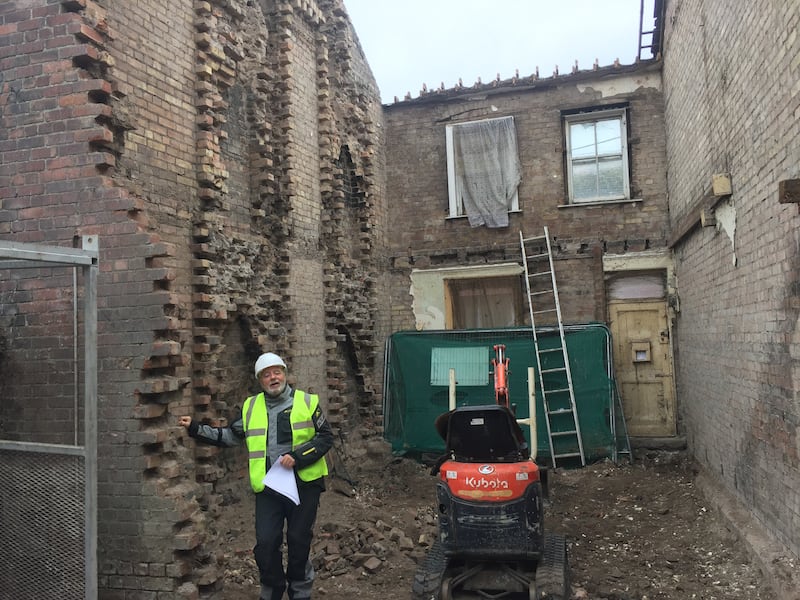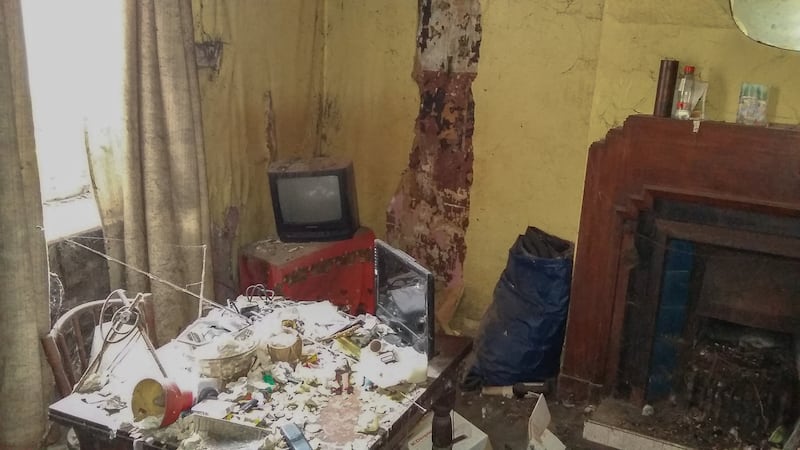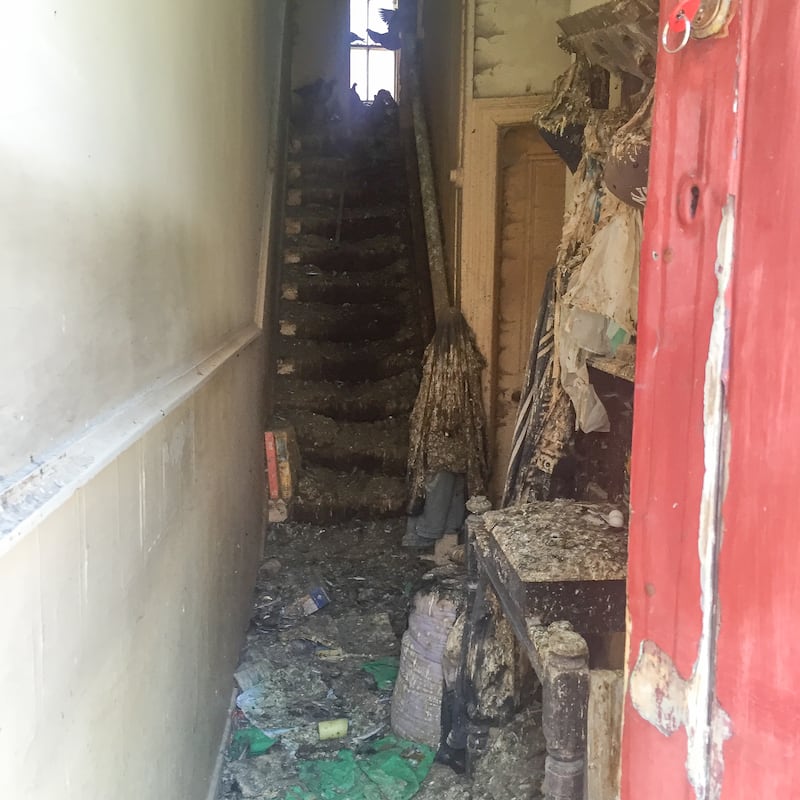When Paul Cathcart first opened the front door of the house in Ringsend, Dublin 4, that he now calls home, he saw two pigeon eggs laid in the hallway.
“The house was infested with pigeons,” he says, estimating there to have been a “couple of hundred at least inside the house”.
This was the first sign his new home, which was on Dublin City Council’s Derelict Sites Register at the time, had fallen into a state of complete disrepair.
“It was the worst house in Dublin 4,” he says. “We realised on surveying it that it would have to be completely gutted.”
READ MORE
Cathcart and his wife Jane purchased the two-bedroom red brick house in 2016. The end-of-terrace property was valued at €75,000, a quote reflecting the fact it was in a derelict and dangerous condition inside and out.
The 71-year-old previously lived in Cabinteely in the south of the county. Before retiring, he was a chef at Digby’s restaurant in Dún Laoghaire, which he co-owned with Jane, who now works as an accountant specialising in food businesses.

The couple have three adult daughters. They wanted to downsize and move closer to the city centre.
“Why have a five-bedroom house and a quarter of an acre at our age? We used it once a year at Christmas when they were all here, and that was all,” he says.
Despite the Ringsend property’s condition, the couple believed number five Chapel Avenue had potential, but they did not know that realising it would be “so complicated”.

Derelict Dublin: Why are there so many rotting buildings in the capital?
Built in about 1902, the house was occupied by the same family for a century before becoming derelict some 20 years ago.
“There were holes in the roof, the back wall was falling down, there was a tree growing out of the wall at the back of the house on the second floor, a fully grown tree,” Cathcart says.

He says the level of dereliction and vacancy across Dublin, during a housing crisis, is “crazy”.
There are some State incentives available these days to bring such buildings back into use, including the Croí Cónaithe scheme. This was not the case when Cathcart took on his project, but he insists he is “not bitter”.
The first problem to fix was the presence of the pigeons. He says the house was like a “giant bird cage” that had not been cleaned for years.
“I didn’t know that many pigeons could get through a few small holes in the roof and take over and use the whole house as a toilet,” he adds.
At one stage, the couple was quoted €24,000 to have the pigeons removed.
[ The Irish Times view on dereliction in Dublin: a blight on the city landscapeOpens in new window ]
Meanwhile, roof slates were falling off onto the road, with Cathcart opting to install a metal gutter rail around the building’s perimeter in order to catch them.
“I used to go to sleep at night imagining a slate would end up on somebody’s head in a storm,” he says.
Inside, he adds, there were serious health and safety risks and “every kind of rot you can imagine”.
“The floors were dangerous, the stairs were dangerous... Anything could have come crashing down,” he says.

Aside from the front and side walls, the house had to be demolished.
The cost of the renovations, including demolition and various fees, came to €460,000.
“Architecturally, it is amazing, because we had almost a clean slate to build on,” he says.
With the help of House 7 Architects owner Patrick Lynch and builder JP McGann, the owner of Buildstruct, he says the property has been transformed into “an amazing house”.
It underwent a full energy upgrade and was restored to a “very high standard”, including a rear extension, converted attic, replacement slate roof, reconstructed brick chimney, traditional sash windows and lime brick pointing, he says.
The main challenge with the project was health and safety, says Lynch.
For the house to be removed from the Derelict Sites Register, workers had to liaise with Dublin City Council before renovation works commenced.
Resurrecting derelict buildings can be challenging, with significant variations in the complexity and cost of projects, Cathcart says.
The transformation took three years, which is a “lot of time for anybody”, he adds. “There’s light at the end of the tunnel, but it was a hard job.”
One of the “worst obstacles”, he says, was the lack of access to bridging loans. He questions how willing homeowners can be expected to downsize without some support.
“People want to sell their big houses, but before they can buy another one, they have to sell the first and then rent somewhere,” he says. “It’s very difficult with the housing situation.”
[ Dublin’s vacant buildings: ‘It’s my property, I’ll do whatever I want with it’Opens in new window ]
Renting during the renovation period came with challenges. The couple moved into the house before it finished, as their landlord had moved in two students to their rental house when the college year began.
“It was just another one of those situations you didn’t need,” he says.
Although Jane was “very dubious” about moving from her family home of 30 years, she says she “absolutely loves” the Ringsend house.
She is a fan of the area, being close to the city centre and their neighbours, who are the “salt of the earth”.
“And the house is so warm that I can wear a T-shirt around,” she adds.
- Sign up for push alerts and have the best news, analysis and comment delivered directly to your phone
- Join The Irish Times on WhatsApp and stay up to date
- Listen to our Inside Politics podcast for the best political chat and analysis



















